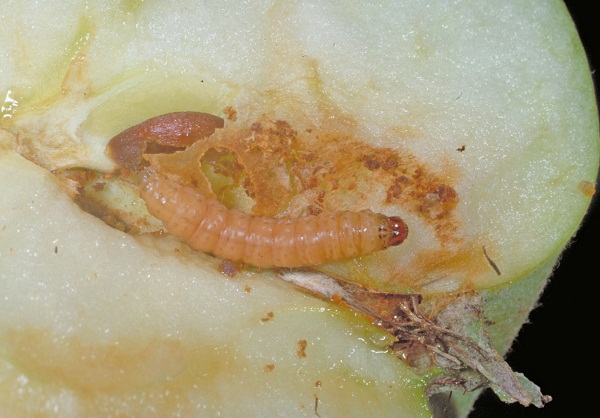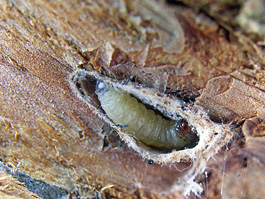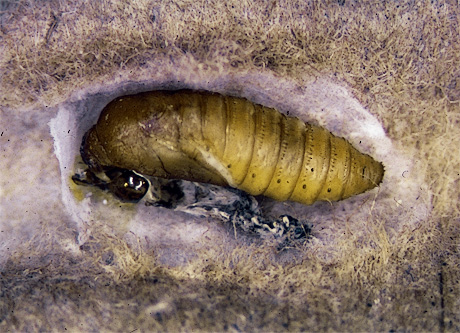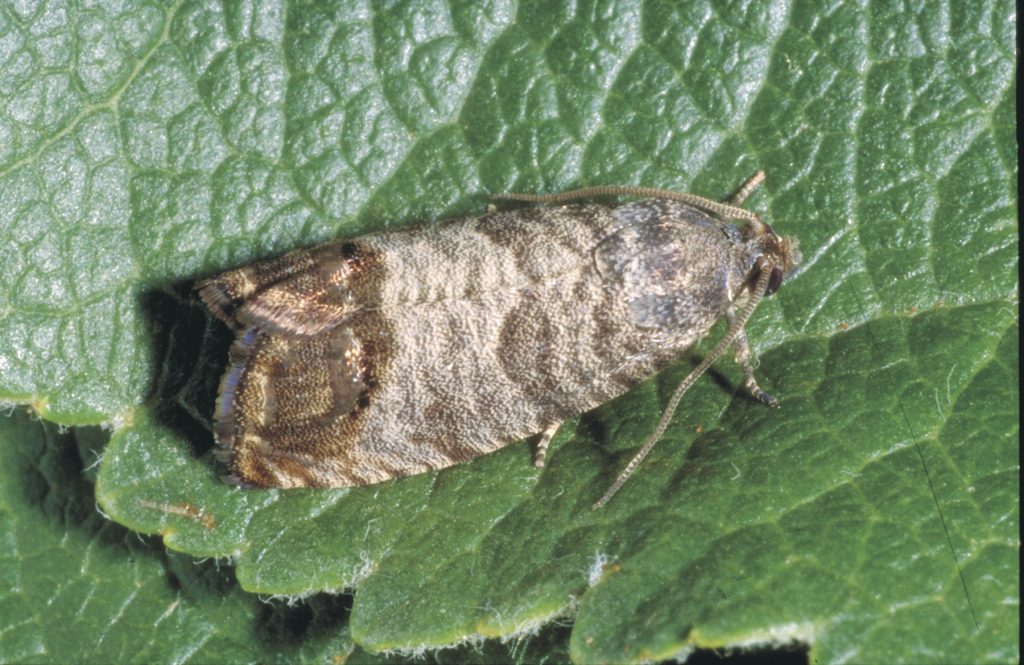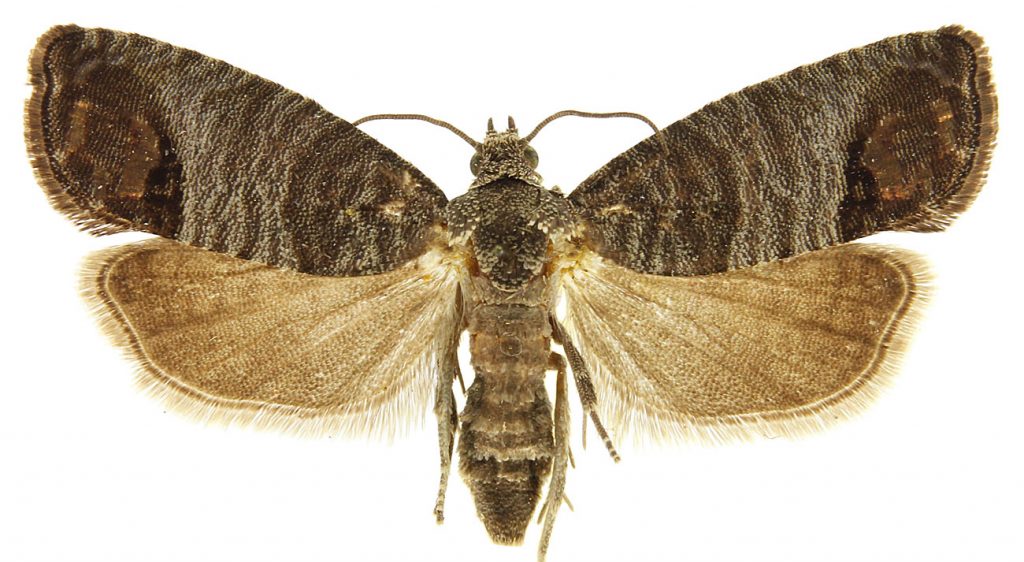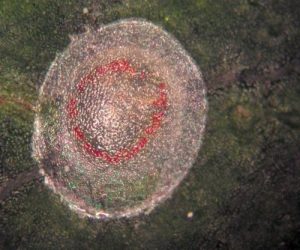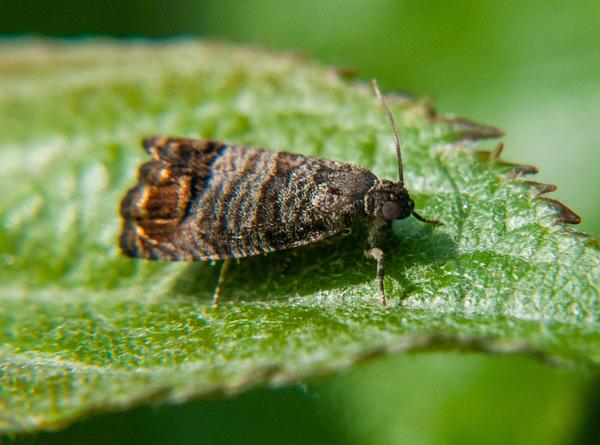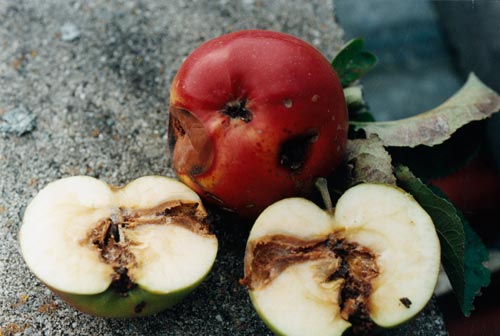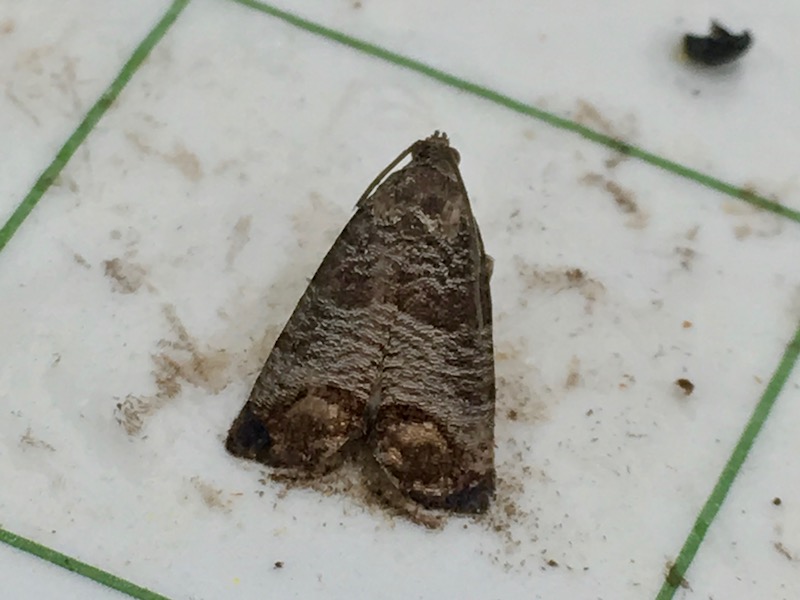Codling Moth (Cydia pomonella)
Codling moth of the tortrix moth family has a wide range found in almost all the world’s continents. However, it is unknown if humans introduced these moths to Europe and other parts of the world or if they were native to that place. According to some, their existence in the Americas dates back to the middle of the 18th century. In their larval stage, these moths are infamous as a pest to fruits like pears and apples, resulting in their name (as codling stands for apples).
biobestgroup.com
Scientific Classification
- Family: Tortricidae
- Genus: Cydia
- Scientific Name: Cydia pomonella
Description and Identification
Caterpillar
The larva has a length and diameter of 2 mm and 0.5 mm respectively in the beginning, eventually growing to 18 – 20 mm (0.70 – 0.78 inches), with their body divided into twelve segments. They are initially pale yellow, then reddish, and finally turning light brown with spots of the same color by the fifth instar.
Because of their inability to feed on leaves, they mostly eat fruits, particularly apples, alongside pears, apricots, peaches, plums, chestnuts, plums, and cherries. The larvae bore deep into the fruit while feeding, hampering its growth, causing it to ripen prematurely.
Pupa
They have a length and width of 10 – 12 mm (0.30 – 0.47 inches) and 3 mm, respectively. They appear dark brown in the beginning, turning to light brown eventually. The females appear wider and longer than their male counterparts. The pupae remain safely enclosed within the silken cocoon. One can spot them in several places like in cracks, below old barks, inside ditches, and deep down in the soil in dry regions.
Adult Moth
Sexual Dimorphism: Present
Color and Appearance
At one glance, the wings appear dull gray, but the colors and markings become more prominent on inspecting closely.
Forewings: When opened, it is gray, brown, or grayish-brown, marked with brown spots encased within golden ring-like structures. These spots replicate tiny mirrors bordered in golden rims, hence called ‘little mirrors.’ When closed, the color is the same, with the mirror-like patterns not prominent.
Hindwings:When opened, they are light brown with any pattern. When closed, the color remains unchanged. When at rest, these moths fold their wings in a manner that resembles a tent.
Though they mostly come in standard colors of brown and gray, their color often changes according to maturity or ripening of the fruits consumed by the larva.
They also have a slender antenna that is a little curved towards the end. Their abdomen is smooth on the dorsal side and scaly on the ventral side.
Average Wingspan: 1.27 – 1.9 cm
Flight Pattern: Not recorded
Season: April – June
Egg
The tiny eggs measure 1- 1.2 mm (0.03 – 0.05 inches) and are white, looking like convex lense. A transformation in the egg’s color is observed with the formation of the caterpillar within. The red rings develop first followed by red spots that is the caterpillar’s head. The eggs hatch between 7 and 12 days, or even as early as five days.
Quick Facts
| Distribution | Europe, North America, South America, Asia, Australia, Africa, Pacific Islands |
| Habitat | Orchards, gardens, plantations, fields and in every other place where their host plants grow |
| Predators | Birds like the woodpecker, spiders, bugs, ants, beetles, thrips, parasitoids like flies and wasps mostly attacking the larvae and eggs |
| Lifespan of adults | 13 – 18 days (maximum lifespan for males and females being 38 and 37 days) |
| Host Plants | Apples, pears, apricots, plums, chestnuts, walnuts |
| Adult Diet | Nectar, diluted molasses, diluted honey if at all it feeds |
Did You Know
- The antennae of these moths serve as powerful olfactory receptors in detecting chemicals released by apples and pears.
- They are known for their immense destruction of crops, mainly fruits. In a British Colombia case study conducted between late 1980 – early 1990, these moths accounted for 25 – 50 % damage in the crops.
- Several measures are adopted to control the codling moth population, like tying vinegar traps to the trees, spraying insecticides, or even placing sticky traps near orchards and gardens.
Scientific Classification
- Family: Tortricidae
- Genus: Cydia
- Scientific Name: Cydia pomonella


